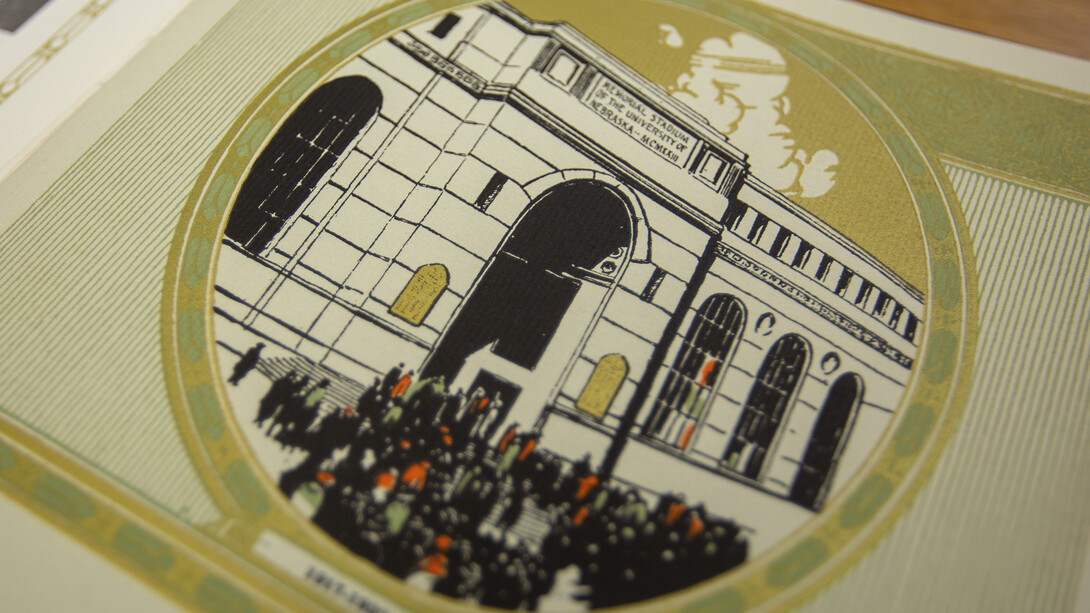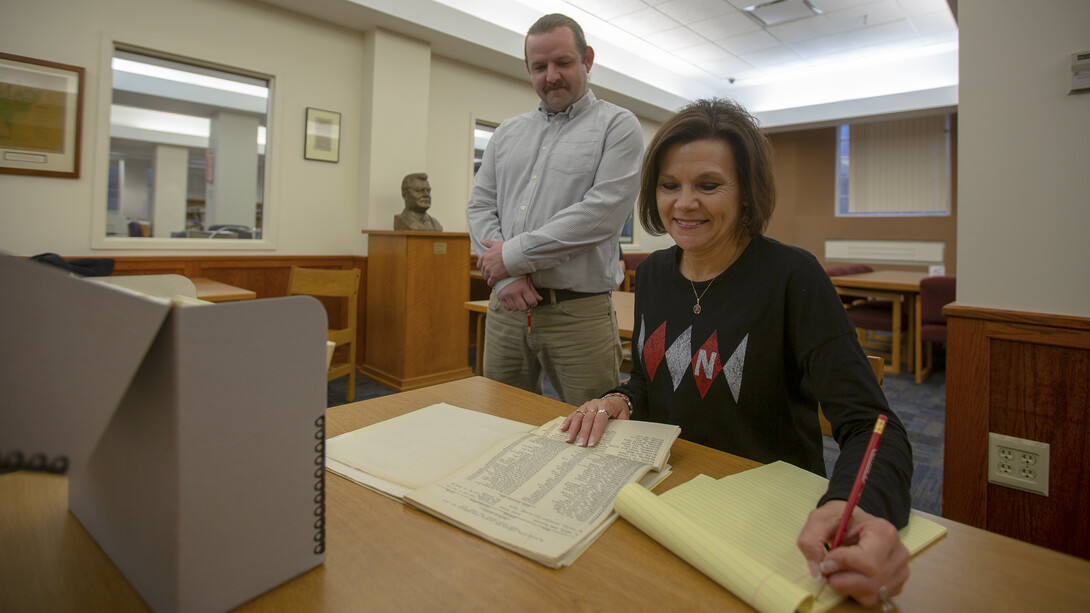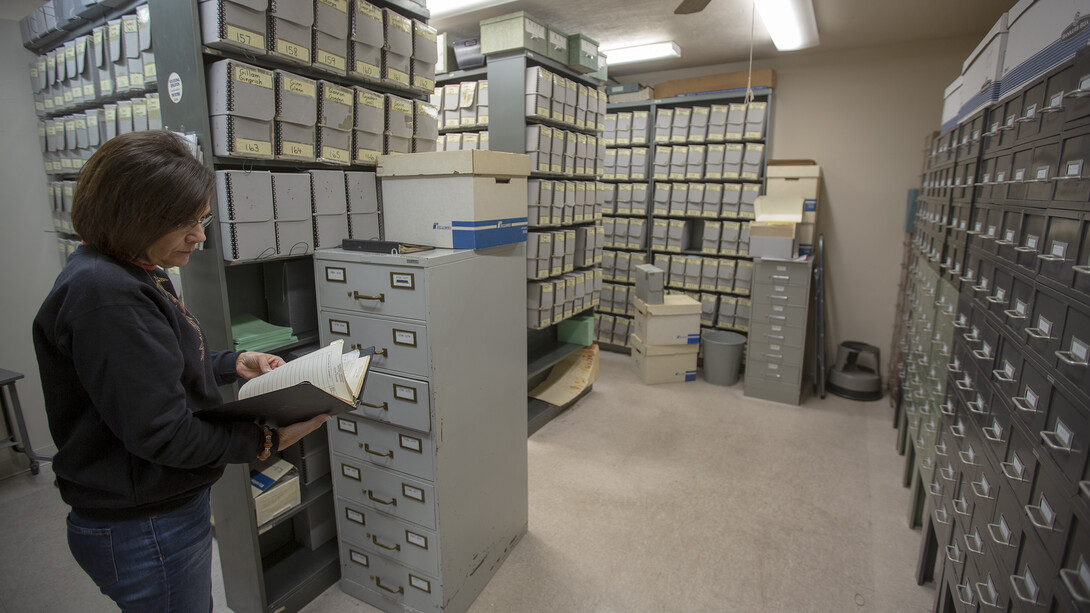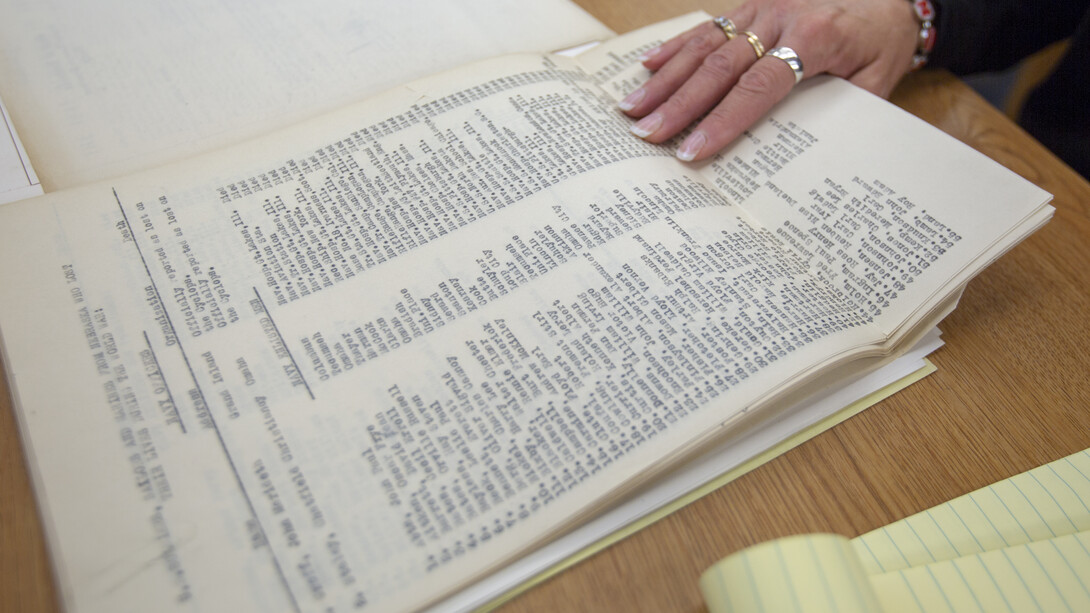
A mission to identify Huskers who served in World War I led Nebraska’s Cathy Urban and Josh Caster on a journey through military records, university yearbooks and 100-plus-year-old student records.
Their dogged persistence, aided by work experience searching campus information systems, helped University of Nebraska–Lincoln officials finalize plans for a memorial honoring Gen. John J. Pershing, Husker students and all Nebraskans who served in the Great War.
The memorial — which will be installed this week at Gate 20 in Memorial Stadium’s east concourse — will be dedicated during a 7:45 a.m. Nov. 11 ceremony. The free, open-to-the public event will mark the 100th anniversary of the armistice that ended World War I and include a design reveal of a new veteran service reflection area planned for near Nebraska’s Pershing Military and Naval Science Building.
“This has been a great and rewarding project,” said Urban, a quality assurance specialist with the University Registrar. “My first job at the university was working with and transferring student records to microfiche. I moved on from that job. But, any time someone needs to look up old student records, they somehow find me.”

World War I Memorial
Following a similar path of major national universities after World War I, the University of Nebraska opted to build an athletic stadium in honor of fallen soldiers.
By spring 1923, the Nebraska Memorial Association — which was part of the Nebraska Alumni Association and led by the fundraising efforts of Harold Holtz, a 1917 alumnus — had collected enough pledges and donations to start building Memorial Stadium. Groundbreaking ceremonies were held April 26, 1923 and the first game was played Oct. 20, 1923, with Nebraska defeating Oklahoma, 24-0.
Renderings of the stadium in NU’s 1924 yearbook show plaques situated on either side of what is today Gate 20. It is generally believed that those plaques were intended to honor veterans of the war. However, aside from a single 1924 letter requesting a design concept by Mount Rushmore creator Gutzon Borglum, no photos or official paper record of the plaques exist in university or state historical archives.
“If you look today, there are still shadows on the columns on either side of Gate 20,” said Michelle Waite, assistant to the chancellor for government and military relations. “They make me think some sort of plaque was hung there. We just don’t know for certain what they were.”
Two years ago, John Hilgert, director of the Nebraska Department of Veterans’ Affairs, approached Waite about the university doing something special for the 100th anniversary of the end of World War I. At that same time, Richard Zierke, who served in the U.S. Marines in the 1970s, and other members of the public expressed an interest in the university creating a memorial that reflected the history and meaning behind the name of the football stadium.
“All the stars sort of aligned at that time,” Waite said. “That led the university to taking the lead on these plaques and working toward the creation of a reflection area near Pershing Military and Naval Science building.”
Through discussions about the project, Waite has searched for the plaques in campus storage areas and through historical collections.
“We’ve never been able to confirm what would have hung at Gate 20,” Waite said. “If someone knows where the plaques are or if you have a photo of them in place, we would love to know about it.”

Gold Star list
Caster, an archives manager in the University Libraries, helped focus the initial search by tracking down what would be called a Gold Star list today. The list showed all Nebraskans who died in World War I and was issued in 1924 by the State of Nebraska’s adjunct general’s department. Caster found it in University Archives and Special Collections files that document the history of Memorial Stadium.
“When it comes to the start of a project like this, you are never sure what you are looking for or where it might live,” Caster said. “Luckily, because of the good work of university archivists documenting records, it makes it easy for me to find details that can narrow a search.”
By comparing the list to university yearbooks and student records, Urban was able to help finalize names for the veteran memorial plaques. The work was similar to a project during which Urban and Caster assisted Athletics with tracking the names of letter winners for Husker Hall of Fame plaques.
“(The letter winners project) took a long time, but we were able to take processes from that search and apply them to the veterans project,” Urban said.
Based on the records used to finalize the list, the two 9-foot by 5-foot World War I memorial plaques include the names of 113 Nebraska students who, at a minimum, enrolled in the university and signed up to participate in World War I. If needed, the design also allows for more names to be added.

The plaques are an extension of Nebraska’s commitment to honor and support veterans, students who serve in the military and their family members. Other recent enhancements in Nebraska’s support of veterans include: the launch of the Military and Veteran Success Center; introduction of red, white and blue Honor Cords for military service members and veterans participating in Nebraska commencement exercises; and the creation of a POW/MIA chair within Memorial Stadium.
The military reflection area being revealed during the Nov. 11 ceremony will also be added to the university’s overall list in veteran supports. The space, which will be immediately south and extend to the west of the Military and Naval Science Building, will include an enhanced area for military ceremonies. Other details will be announced.
“Veterans and their family members are an important part of the university community and we are honored to recognize and support their service,” Waite said.







